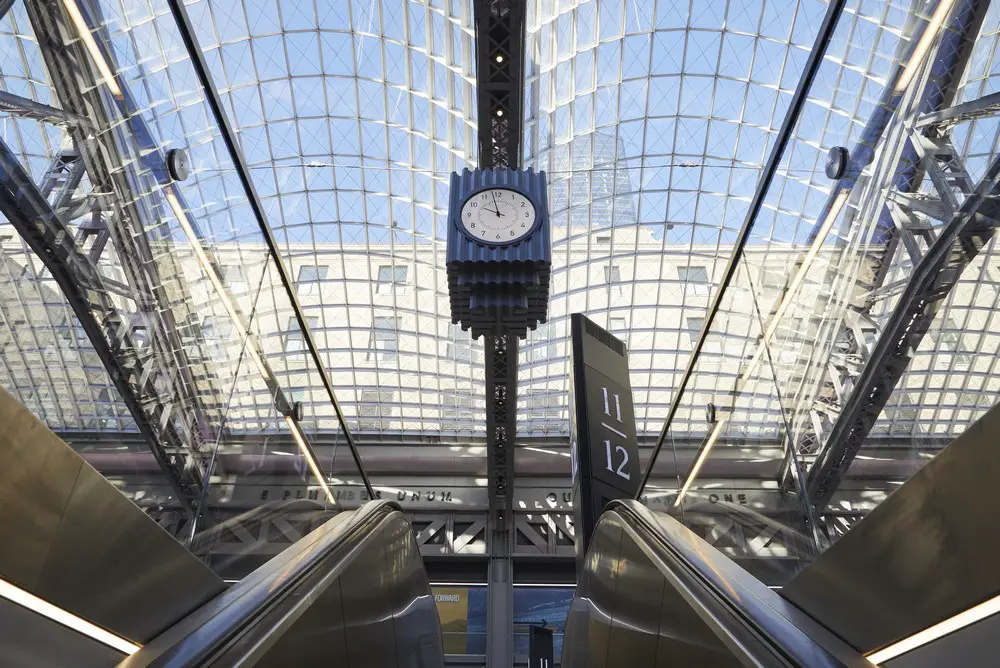Moynihan Train Hall, New York masterplan, NY Landscape, American architecture images
Moynihan Train Hall in New York
Jan 5, 2021
Architects: SOM
Location: New York, USA
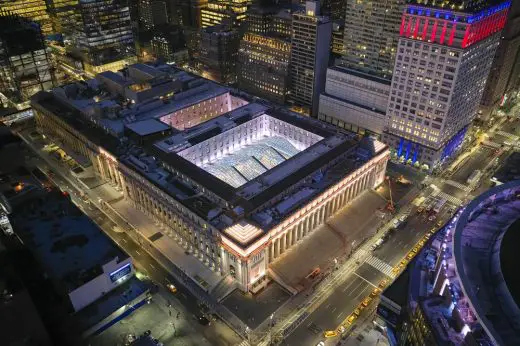
photo © Lucas Blair Simpson | Aaron Fedor © SOM
Moynihan Train Hall
Designed by SOM, the Moynihan Train Hall completely reimagines the travel experience at the busiest transportation hub in the Western Hemisphere, and evokes the architectural heritage of New York’s original Pennsylvania Station.
New York, New York – Governor Andrew M. Cuomo and Skidmore, Owings & Merrill are celebrating the completion of a long-held New York dream. The new Daniel Patrick Moynihan Train Hall, named for the visionary United States senator who proposed the project in the 1990s, will open its doors on January 1 to New Yorkers and travelers from the Long Island Rail Road, Amtrak, the New York City Subway, and the entire northeast region. It is one of the most monumental civic projects undertaken in the city in a generation, and transforms the way millions of people interact with one of the world’s largest cities.
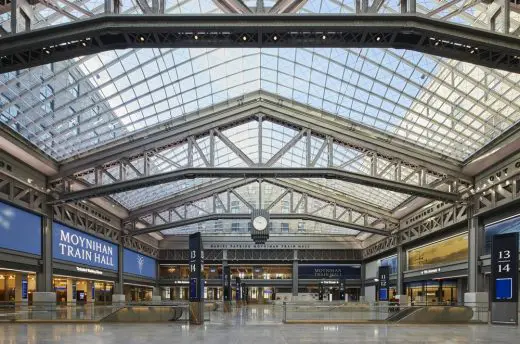
photo: Lucas Blair Simpson © SOM
Moynihan Train Hall expands the Pennsylvania Station complex with a 486,000-square-foot rail hub in the landmark James A. Farley Post Office Building. Situated across Penn Station between Eighth and Ninth Avenues and West 31st and 33rd Streets, it reverses the dark, overcrowded experience that so many commuters have endured for decades. It brings light to the concourses for the first time in more than 50 years, increases total concourse space by 50 percent, and restores the grandeur that was lost with the demolition of the original Penn Station half a century ago.
“This is an incredibly important moment in the history of New York City,” said SOM Partner Colin Koop. “We’ve designed a place that evokes the majesty of the original Penn Station, all while serving as a practical solution to the issues that commuters in, to and from New York have endured for too long. By connecting to our architectural past through the adaptive reuse of the Farley Post office building, we are breathing new life into New York, and recreating an experience no one has had here in decades.”
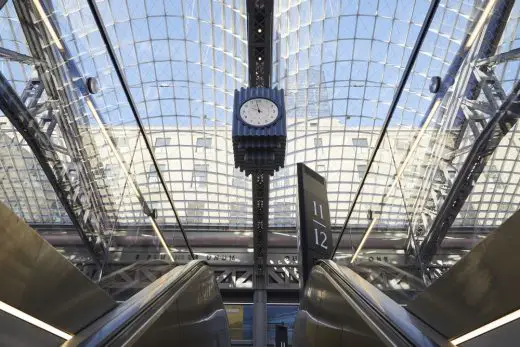
photo: Lucas Blair Simpson © SOM
Laura Ettelman, SOM Managing Partner, continues, “SOM has been working on this project since 1998 – for more than two decades. Our deep commitment to this project has been fueled by the profound belief that New York City is better because of projects like this.”
That original Pennsylvania Station was designed by McKim, Mead & White in 1910. It was a skylit, Beaux-Arts masterpiece that celebrated travelers’ arrival to New York City. After its demolition in 1965, only its concourses and platforms remained, and they were all underground in a space downgraded to accommodate only 200,000 people.
Five decades later, the number of people passing through the station every day swelled to more than 600,000, while the Farley Building – also designed by McKim, Mead & White in 1913, with a grand staircase and colonnade that echoed the firm’s design for Penn Station – had become 95 percent vacant. Residing above Penn Station’s tracks, the Farley Building was the perfect place for a new train station.
“One of the most remarkable things about this project is the way that it transforms an under-utilized and underappreciated building into a new, inviting front door for this city,” said Roger Duffy, the retired SOM Design Partner who led the project for the firm. “The train hall is at the core of this transformation. It is designed with lightness and warmth, which combine to reestablish the essence of what it means to come to New York.”
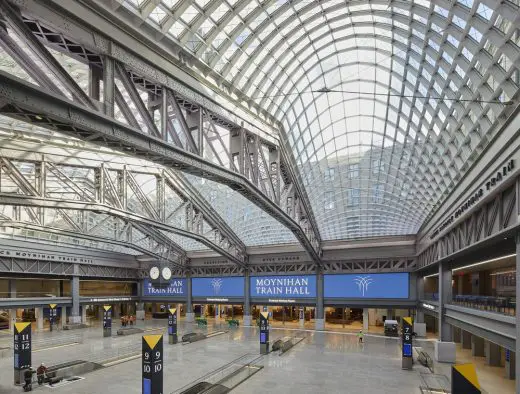
photo: Lucas Blair Simpson © SOM
The new train hall, located in the 31,000-square-foot former mail sorting room, is designed with a dramatic skylight that traverses the entire space – much like the original Penn Station did in 1910. The skylight, designed with the structural engineering firm schlaich bergermann partner, is arranged in four catenary vaults. To support the structure, SOM uncovered the building’s three massive steel trusses, which had been invisible to the postal workers a century ago, and chose to reveal them as a major focal point of the design. With a web-like structure, the bolted trusses add an extra sense of lightness to the train hall – establishing a modern look and feel while displaying the workmanship of neoclassical design.
Each of the four catenary vaults is composed of more than 500 glass and steel panels that come together to form a moiré effect. At the edges of each vault, the panels thicken to sustain greater structural loads, while at the apexes, which span 92 feet above the concourse, the panels’ depth lightens to enhance the airy ambience of the space. The trusses are each equipped with new lighting fixtures that illuminate the train hall at night. On the middle truss, a new clock – designed by Pennoyer Architects and inspired by the analog clocks that were once prevalent at the original Penn Station – marks the center of the room.
Along the eastern wall, four large LED screens feature New York State imagery designed by Moment Factory, and help brighten the train hall at night. Hospitality spaces – including ticketing kiosks and information kiosks designed by SOM, Amtrak waiting rooms on the concourse level designed by Rockwell Group, an Amtrak Metropolitan Lounge by FX Collaborative, and a food hall designed by Elkus Manfredi – surround the space on two floors to establish an inviting experience that provides all the amenities a commuter will need. The signage and wayfinding identify the hospitality and platform entries by color to enable intuitive circulation through the station – an element that has largely been missing in the confusing corridors of Penn Station for the last 50 years.
The interior spaces of the station, including the train hall, share a unified material aesthetic. Drawing inspiration from the existing, historic post office at the top of the Farley Building’s staircase as well as Grand Central Terminal, SOM designed the station’s interiors with Tennessee Quaker marble, a material that evokes that sense of warmth, calmness, and grandeur that are central to the design.
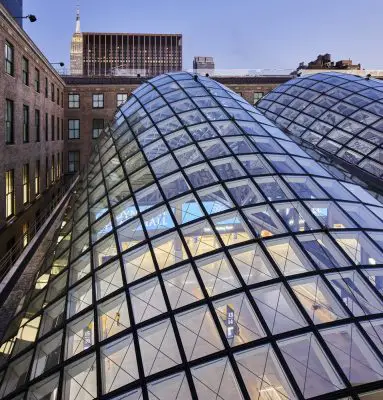
photo: Lucas Blair Simpson © SOM
Moynihan Station connects to nine platforms and 17 tracks that primarily service the Long Island Railroad and Amtrak. The station connects directly with the Eighth Avenue Subway, and plans are in the works to connect the entire Penn Station complex, including Moynihan Station, to MetroNorth and AirTrain JFK.
Moynihan Station is accessible through a variety of grand entrances. As part of the first phase of its construction, two new entrances on Eighth Avenue, designed by SOM, flank the Farley Building’s staircase, and lead directly into the train hall and the new West End Concourse – a significant widening of an existing concourse that serves as a connection between Penn and Moynihan Stations. At entrances on 31st and 33rd Streets, SOM implemented new canopies to help identify the civic presence of the station and complement the arched windows of the Farley Building. Art installations by Elmgreen & Dragset at the 31st Street entrance and Kehinde Wiley Studio at 33rd Street, as well as a second skylight create an inviting experience, draw passengers in.
The entrance on Ninth Avenue reshapes the Annex – an expansion to the Farley Building constructed in the 1930s that has served as a parking garage and office space for most of its life – into a 21st-century, mixed-use anchor for the neighborhood. The entrance is flanked by restaurants, and responds directly to the massive new developments to the west of the station. It aligns directly with the entry into Manhattan West, which was planned and largely designed by SOM, to create one contiguous pedestrian experience. Inside, an east-west corridor is surrounded by retail and additional dining amenities, as well as circulation points to 730,000 square feet of offices for Facebook spread across four floors, along with offices for Amtrak around the train hall. The retail, much like that of Grand Central Terminal, elevates Moynihan Train Hall into a vibrant hub of activity – and reimagines the Annex anew.
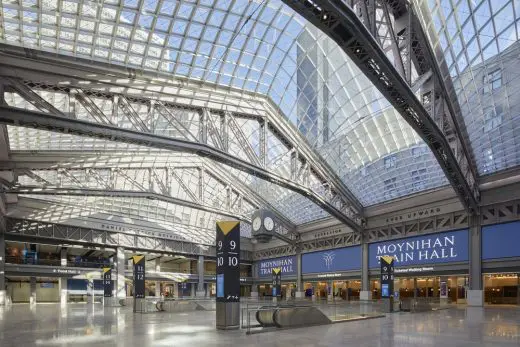
photo: Lucas Blair Simpson © SOM
None of this would have been possible without the world-class team that has been dedicated to guiding Moynihan Train Hall to completion – from the Office of Governor Andrew Cuomo and Empire State Development to Vornado Realty Trust, Related, the MTA, Amtrak, and SOM. It is the capstone project of Governor Cuomo’s successful push to transform Penn Station, and the planning and construction of a major public facility in December 2020, amidst the coronavirus pandemic, has required a significant team effort.
For the long run, Moynihan Train Hall serves as an important precedent for redefining historic architecture. It targets LEED for Transit certification through a variety of measures, from the natural lighting of the skylight to its use of new mechanical systems that improve the air quality within the century-old Farley Building. It adds much needed circulation capacity – not only making commutes more convenient, but also safer, as it spreads the crush of people during rush hours, and enables better social distancing. On a broader level, it is a new symbol of hope for the future. Moynihan Train Hall re-establishes a civic icon for New York, recaptures the original spirit of train travel to Penn Station, creates a new gateway to the city, and celebrates one of the greatest cities in the world.
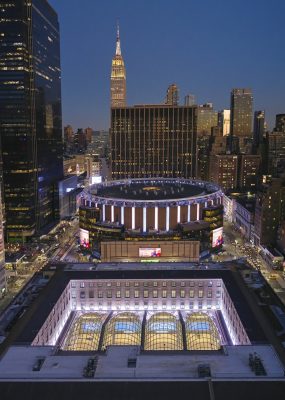
photo © Lucas Blair Simpson | Aaron Fedor © SOM
Moynihan Train Hall in New York, USA – Building Information
Architects: SOM
Client:
Empire State Development in a public-private partnership with Vornado Realty Trust, The Related Companies, Skanska, the MTA, the Long Island Rail Road, Amtrak, and the Port Authority of New York and New Jersey
Team:
Roger Duffy, FAIA Design Partner
Colin Koop, AIA Design Partner
Laura Ettelman, AIA Managing Partner
Marla Gayle, AIA Project Manager
Jon Cicconi, AIA Senior Design Architect
Andrew Lee, AIA Design Architect
Joyce Ignacio Senior Technical Coordinator
Andrew Melillo Site Representative
Structural Engineering: Severud Associates
MEP/FP/IT/Telecom: Jaros Baum & Bolles
Skylight Structural Engineering: SBP Engineering
Historic Building Restoration: Building Conservation Associates, Inc.
Rail Engineering: Systra Consulting, Inc.
Civil/Geotechnical Engineering: Langan Engineering & Environmental Services, Inc.
Lighting Design: Domingo Gonzales Associates
Graphics and Wayfinding: Pentagram/Mijksenaar USA
Acoustics/Audiovisual: Cerami & Associates
Security Design: Thornton Tomasetti/Weidlinger Protective Design Practice/Ducibella Venter & Santore
Vertical Transportation: Van Deusen & Associates
Historic Preservation: Higgins & Quasebarth
Baggage Handling Systems: BNP Associates, Inc.
Industrial Design: Billings Jackson Design
Train Shed Plumbing: WSP
Train Hall Clock Design: Peter Pennoyer Architects
Amtrak Ticketed Waiting Area Fit Out: Rockwell Group
Code Consultants /Radio Design: Code Consultants Professional Engineers, PC
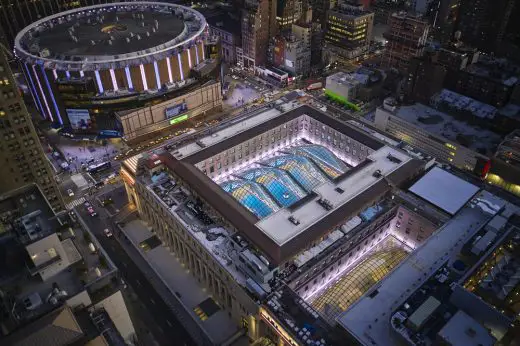
photo © Lucas Blair Simpson | Aaron Fedor © SOM
Photography: Lucas Blair Simpson | Aaron Fedor © SOM
Moynihan Train Hall, New York images / information received 050121
Recent related post on e-architect:
June 21, 2023
High Line – Moynihan Connector, Manhattan, New York City, USA
Architects: Skidmore Owings & Merrill – SOM
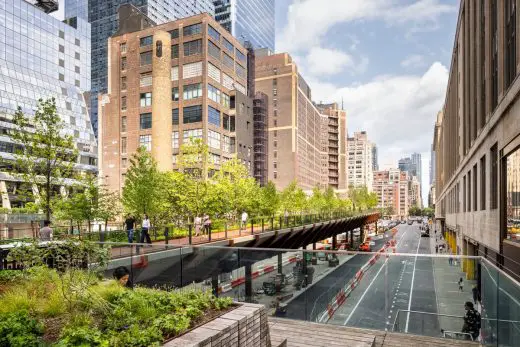
photo : Andrew Frasz / courtesy of the High Line
High Line – Moynihan Connector
May 7, 2021
Article for e-architect by Joel Solkoff:
Moynihan Train Hall New York City Access Review – In the age of the coronavirus, remembering the New York City architecture of my youth
Location: New York City, USA
New York City Architecture
Contemporary New York Buildings
Manhattan Architectural Designs – chronological list
New York City Architecture Tours by e-architect
Il Makiage pavilion
Design: Zaha Hadid Architects
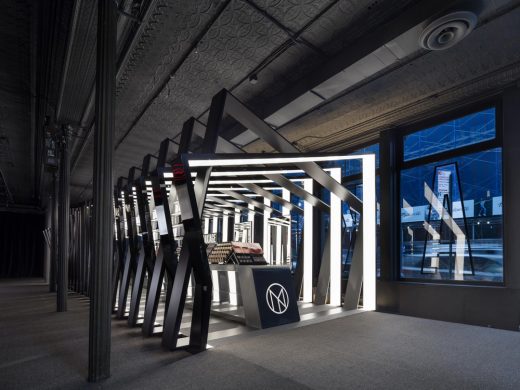
photograph : Paul Warchol
Il Makiage pavilion by Zaha Hadid
45 Park Place, Tribeca, Lower Manhattan
Design: SOMA Architects ; AOR: Ismael Leyva
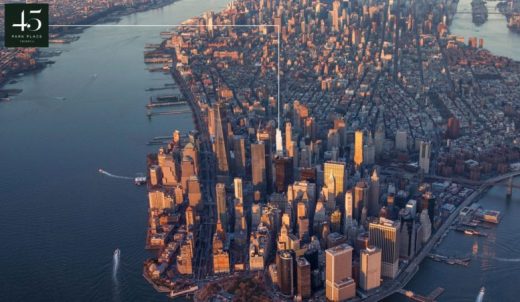
rendering : Williams New York
45 Park Place Tower
Pier 40 Hudson River Apartments
Design: DFA
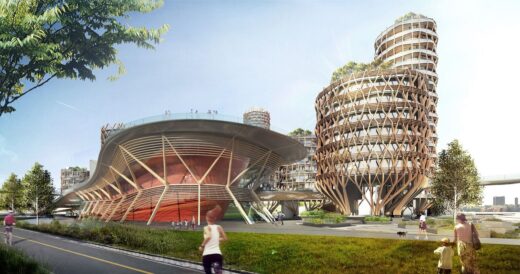
images courtesy of architects
Pier 40 Building
432 Park Avenue Skyscraper
Design: Rafael Viñoly Architects
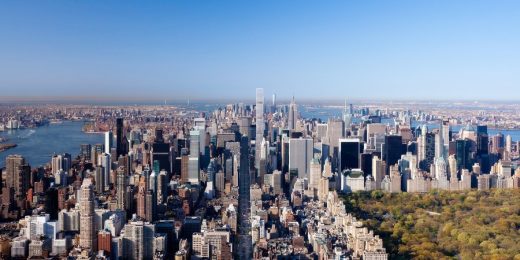
image © dbox for CIM Group & Macklowe Properties
432 Park Avenue Tower New York
Comments for the Moynihan Train Hall, New York Designed by SOM – Skidmore, Owings & Merrill, NY, USA, page welcome

